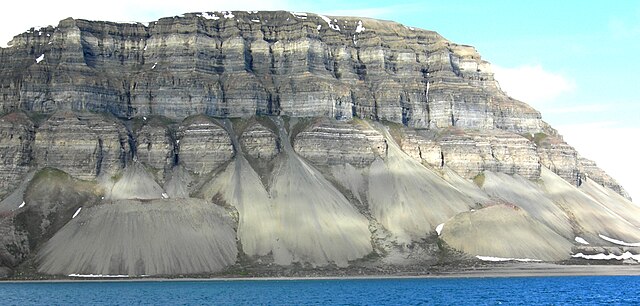Landslides, also known as landslips, are several forms of mass wasting that may include a wide range of ground movements, such as rockfalls, mudflows, shallow or deep-seated slope failures and debris flows. Landslides occur in a variety of environments, characterized by either steep or gentle slope gradients, from mountain ranges to coastal cliffs or even underwater, in which case they are called submarine landslides.
A landslide near Cusco, Peru, in 2018
The Mameyes Landslide, in the Mameyes neighborhood of barrio Portugués Urbano in Ponce, Puerto Rico, was caused by extensive accumulation of rains and, according to some sources, lightning. It buried more than 100 homes.
The landslide at Surte in Sweden, 1950. It was a quick clay slide that killed one person.
Types of landslide
Mass wasting, also known as mass movement, is a general term for the movement of rock or soil down slopes under the force of gravity. It differs from other processes of erosion in that the debris transported by mass wasting is not entrained in a moving medium, such as water, wind, or ice. Types of mass wasting include creep, solifluction, rockfalls, debris flows, and landslides, each with its own characteristic features, and taking place over timescales from seconds to hundreds of years. Mass wasting occurs on both terrestrial and submarine slopes, and has been observed on Earth, Mars, Venus, Jupiter's moon Io, and on many other bodies in the Solar System.
Talus cones produced by mass moving, north shore of Isfjord, Svalbard, Norway
Mass wasting at Palo Duro Canyon, West Texas (2002)
A rockfall in Grand Canyon National Park
Curved tree trunks in an area of soil creep on Grand Mesa, Colorado, US








